Painting alien skies: changing the perspective, provoking questions
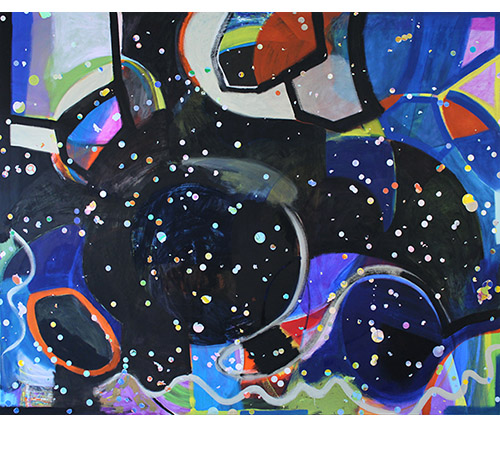
An interview with Helena Kauppila
The limits of the canvas don’t constrict artist Helena Kauppila, PhD, but inspire her to explore the expansive sky or the depths of the ocean from a new perspective: she physically changes the point of view for us so that we’re not humans on Earth, but an entity somewhere out in the universe or within the waters.
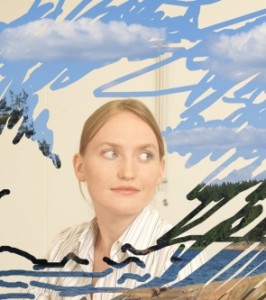
Helena Kauppila
The challenge of creating a space on canvas for science and abstract painting to intersect is not easy. Kauppila is precise in her research of scientific concepts and carefully plans her often-large canvases with a methodical mindset. But then the painting begins, with a palate of vivid oil paints – she’s not shy about using colors – and the limited space on the canvas allow for a freedom to explore other possible worlds and realities.
To be able to delve into these topics, an appreciation of the breadth and limitations of both disciplines is needed, and Kauppila is in good standing to recognize this. By academic training, she is a mathematician, having received a bachelor’s degree from the California Institute of Technology in Pasadena, Calif., and a Ph.D. from Columbia University in New York City, before deciding to pursue her passion for painting.
In recent years, Kauppila has focused her artistic attention on a few areas of science that interest her and looked at how these topics, and the questions they inspire, can be visualized. In this interview, we primarily discussed her series of paintings pertaining to stars and planets outside of our solar system. Kauppila referred to two sets of astronomy data freely available online for these paintings: star charts and maps of exoplanets.
The star charts use widely available astronomical data to map the location of over 100 million suns outside of our solar system. The exoplanet data is more recent, collected mostly by NASA’s Kepler space telescope, launched in 2009 to discover Earth-sized planets outside of our solar system, so-called exoplanets. Almost 2,000 exoplanets have been confirmed, orbiting over 1,200 different suns, with another few thousand candidate exoplanets to sill be confirmed, and many more patches of the sky still unexplored.
Neda Afsarmanesh, Sense About Science USA: Let’s start general: What are your motivations when you’re painting?
Helena Kauppila, artist: I have so many motivations when I’m painting. Painting is about exploration for me, and it is also about creating something that in a sense helps other people explore. The effects of painting are quite subtle and not all artists, or people for that matter, agree with me that painting can really change the psychology of a room or a space, or that it can change the way in which a person can or cannot exist as an individual in a room or in a space – much like it is agreed that architecture does. But I believe it can and that it can help you observe your own thoughts, your own opinions or the questions that come up when you’re looking at the art or just talking to someone in the same room.
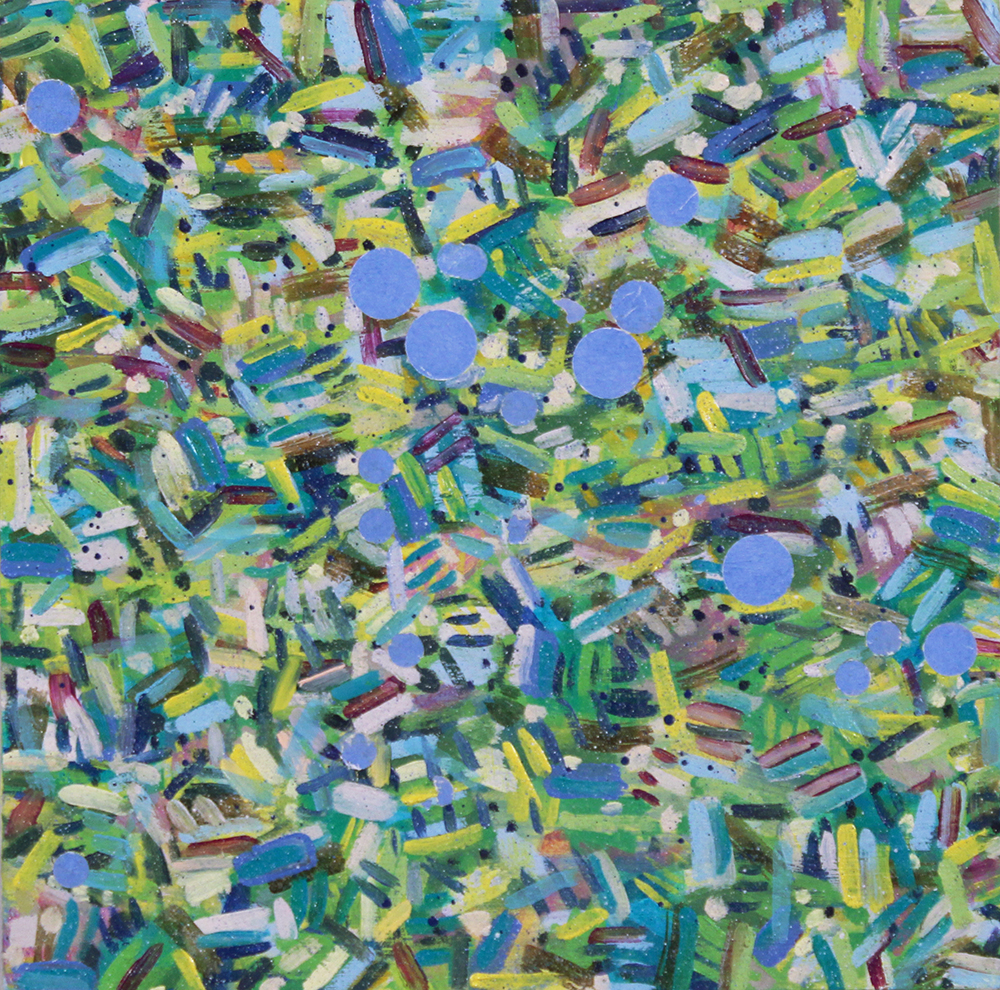
Kepler 62E
Neda Afsarmanesh: Now getting specific: Can you tell us about the origins of your star chart / Kepler paintings.
Helena Kauppila: These are a series of paintings, incorporating star charts from various perspectives in the universe. The titles of the pieces are based on the name of the planet that they are from or the viewpoint that they represent. For instance, Kepler-62e is a painting where the supposed artist is situated on Kepler-62e, and is looking out, in this case towards our solar system, and capturing from that viewpoint what the night sky would look like. This is how the star chart is incorporated into the painting.
What originally gave me the idea for the star charts was a conversation with an astronomer at NYU, Benjamin Weaver, who deals mostly with the software side of things, like making these gigantic amounts of data more easily searchable for researchers. I was just blown away by the gigantic amount of data that he was talking about.
My star paintings have two components: They are physically almost like two paintings on top of each other, with a star chart embedded into them.
First I make the under-painting and then incorporate the star chart by using a masking layer – these are stickers that I place on top of the under-painting to protect parts of this first painting when I proceed to the next phase, which is a second painting one on top of this first one.
This second (top) painting has something to do with the planet or a few factoids that we have found out about the planet. Sometimes scientists might know that there’s a lot of water on the planet. Many of the planets I picked because there was some news article about them, though it doesn’t have to be that way. Primarily it is an abstract painting where various motivations have come into play. Lastly, the masking layer is removed, so at the end you have this star chart revealing the under layer and the other painting on top, or coexisting rather.
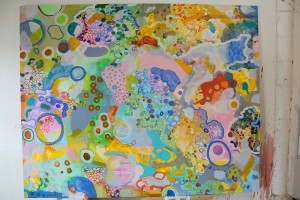
Before stickers
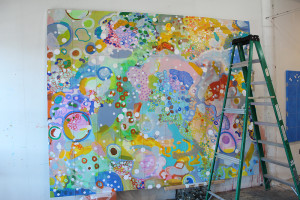
After
Neda Afsarmanesh: Mathematically, what was fascinating to you about these star charts?
Helena Kauppila: These star charts are close to a Poisson distribution, which is in a certain sense the most random arrangement you can get. It is a statistical distribution such that the probability of finding, for instance, five stars in a certain patch of the sky depends only on the size of the patch and not on whether or not you already know if there is a star nearby.
I found this book on Poisson processes in the attic of the math department while doing my Ph.D. I always thought that it would be a really beautiful image to paint Poisson distributions because there’s something visually pleasing about this total patternless image which then the mind just makes up patterns with, because that’s what our brain does. I thought that it would flow in a really nice way because there actually is no pattern in it. You wouldn’t get stuck thinking that these dots are in some circle or clump or such. I thought it would be calming.
Neda Afsarmanesh: So there is this randomness, the Poisson distribution, but what else motivates you to paint these star charts?
Helena Kauppila: Actually the primary motivation was to utilize the science structure to explore our part in the universe. This idea that we can map these objects in the universe is a paradigm shift. These paintings are constructed using a bit of information, a star chart from some very specific perspective in the universe. Once these little facts about the universe accumulate there’s a sort of a 3D map of quite a large chunk of our nearby outer space. All of a sudden you have to readjust: now we even know specific planets, we can look at their addresses for thousands of light years away. So it’s a little bit unavoidable not to sometimes pause and think, okay, we’re just this little ball floating around like other balls out there. That was kind of fascinating to me, these little bits of data and fact being connected to a larger idea. I’m not illustrating a big piece of science.
And then it was also a perfect opportunity to merge what I think is best about science and what I think is best about art. In terms of science, this capacity to find these facts or relationships in a way that then can be verified and built upon by other people of following generations. And in terms of art, which is a little bit more personal, this capacity to explore an individual life, an individual experience that of course also has universal components to it but is sort of not centered on proving but still centered on exploration.
So the paintings, the idea is simply I put the star charts, I locate the artist somewhere else in the Universe and then I can do my abstract painting as an artist somewhere else, anywhere else …
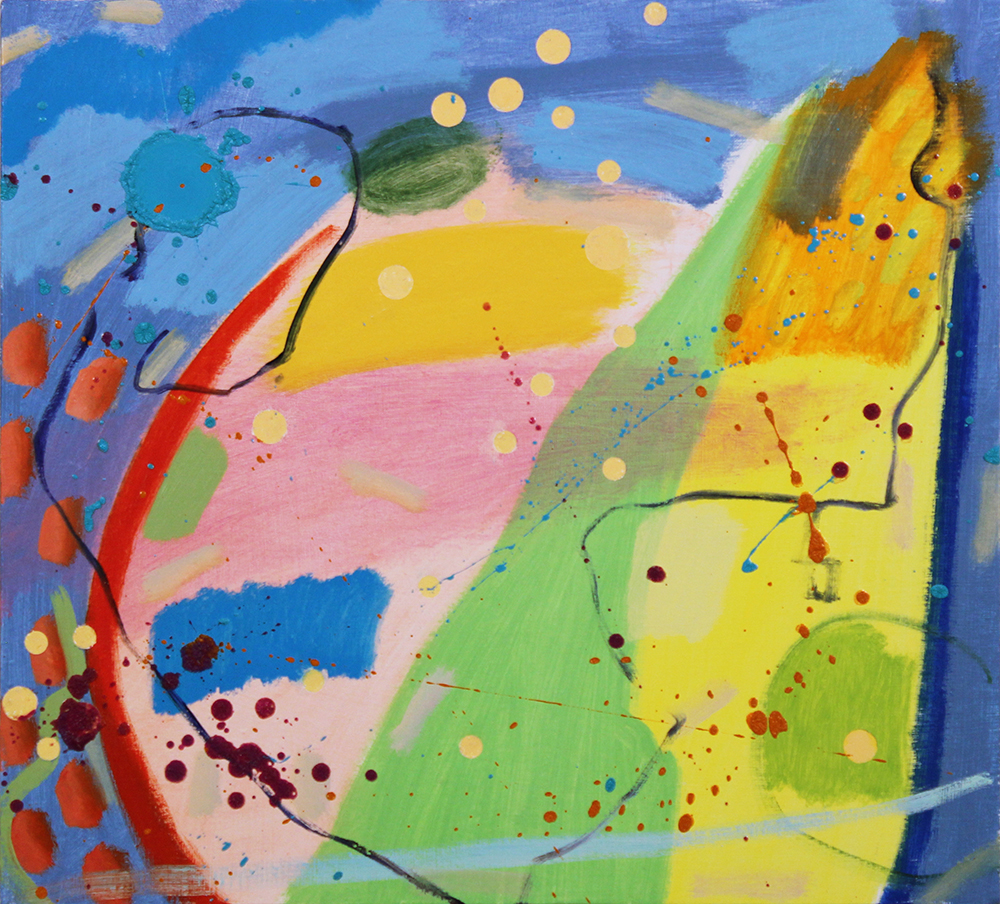
Gliese667
Neda Afsarmanesh: What do you want to convey to those who see your star chart / Kepler paintings?
Helena Kauppila: I want to inspire a sense of exploration, a sense of asking questions, acceptance of questions you don’t know the answer to. I think that it’s often very hard to ask questions, because if you can’t answer them then you have this big void. We have this tendency where we pretend the question doesn’t exist. If we don’t know the answer or how to solve it, we’d rather pretend that the question doesn’t exist. And if we’re not trained in science then maybe we feel intimidated to ask science questions, and we feel that we’re going into some kind of fantasyland just asking the questions. Could there be life out there in other planets, right? If you don’t know anything about science, then maybe you think that it’s fantasyland.
But then on the other hand, scientists have been able to take some of these questions, and be inspired by them. They haven’t answered the question of if there’s life somewhere else, but they have found a lot of planets. They at least discovered that the Earth is not so unique, most likely.
Anyways, making the paintings has to do with asking questions, that’s a big theme in general. Because culturally somehow in front of art we feel very comfortable asking questions. Why did the artist put red paint over here? How do you feel about this painting? Which one is your favorite?
Neda Afsarmanesh: What do you want to get people to talk about once they walk out of your art show or have seen your paintings?
Helena Kauppila: Well, first I would actually suggest that they talk about it while they’re in the art show. And this kind of goes into how I design my art shows, so that they are events where people stay. Ultimately I think the effect of painting is subtle, it’s not like reading an article where you get a certain number of factoids that you can then talk about.
What I respect about the scientific method is the fact that it can teach us when our intuition is wrong. So I think that science done properly has this quality, this fact that if you ask a question and the answer is not what you like, then you have these tools to say, well, maybe I don’t like the answer, but maybe I was wrong. Art can help open up these types of discussion, these types of questions.
Neda Afsarmanesh: You’re now working on a series of paintings that has to do with the oceans. What is your interest in water imagery?
Helena Kauppila: I think water imagery has just been natural for me. I grew up around water, and I just love staring at water. I probably have my 10,000 hours of staring at water, which means that I just paint it, sometimes on purpose, sometimes by accident.
The other aspect is that because I like water and bodies of water, I do end up thinking about conservation of waterways. From my childhood where my parents’ summer house is in the Finnish archipelago I still remember when I was a kid how I would look at the water, and would see the bottom. The Baltic’s very shallow. And for several years now I’ve never seen the bottom. The seaweeds have changed, it’s this mushy dark green seaweed now, like little green specks. They’re in suspension … if you took a bucket of water, you let it stand for days and days and days, the stuff stays in suspension. So now the sea looks like an aquarium that you didn’t take care of for months. And this ends up coming into my work when I feel like I want to do something politically engaging. I intuitively feel the need to conserve water more than any other type of natural scenery.
Neda Afsarmanesh: How have you explored these themes throughout your various water paintings?
Helena Kauppila: Water always reflects the surroundings. Its own existence is clear, but then it’s always intertwined with the circumstances around it. So visually there are many different faces to water, depending on the environment and the perspective.
So for these paintings I am using microbe distributions to combine two perspectives on water. Technique-wise I’m using a similar concept as the star charts, but instead I am using slides of microbes collected from various oceanic research trips that a friend who is an oceanographer gave me. I map out the microbes by attaching stickers to the first layer (one perspective) – this creates a masking layer – and then I paint another perspective of water on top. In the end I remove the stickers so that parts of both perspectives are visible. For instance, from the microbes’ perspective water is more gel-like. Because I’m big, I can just walk through it, but the microbes have a really hard time moving through water.
But yeah, I think I have to understand the microbe distribution better, which by the way is a big science problem as well, though on a different scale, to understand the dynamics of microbe distribution because they have such a big influence on these macro-phenomena, understanding global and seasonal distribution and how they move between water layers, these are sort of big questions.
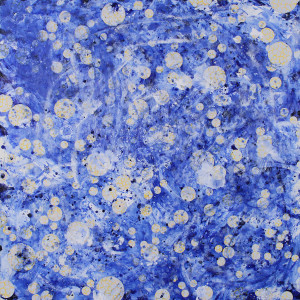
DeepBlue(Microbes2)
Neda Afsarmanesh: Does it come more naturally for you to paint water than the star chart paintings?
Helena Kauppila: Actually I’m having a harder time painting this series because microbes are not totally random. The masking layer also has a shape, and actually this is a technical issue I have to understand before I can paint. I will say I was blown away by the ubiquitousness of these microbes, they are absolutely everywhere and they are responsible for macro-phenomena of ocean water such as the oceanic carbon flux. It has been really hard for me to even grasp this concept even though I’m fully aware of it.
Neda Afsarmanesh: What do you think is the biggest challenge of expressing science in painting?
Helena Kauppila: I have really come to appreciate that when you want to combine art and science, you have to find a very basic structure so that you can just incorporate this one structure, and can still have enough freedom to make a painting, make a real fine art object. Even if I have a billion concepts that I want to think about. The big challenge, is finding these structures that are at the same time informative enough in some way and at the same time are basic and simple enough that they don’t restrict the actual painting process.
Neda Afsarmanesh: What is your biggest concern right now in the field of science?
Helena Kauppila: I think my biggest concern is medical genetic research and also how that relates to genetics and agriculture as well. I think that scares me, because there’s so much money involved. And there’s no money in asking ethical questions. And this worries me, that the ethics, the understanding, the discussion I feel is lagging behind the scientific knowledge. The scientific knowledge is quite giant compared to what we’re able to deal with, what our ethical system is able to deal with. So we kind of need to help people philosophically along.
Neda Afsarmanesh: And what are you most excited or curious about in the field of science right now?
Helena Kauppila: I’m most curious about neuroscience, because I’m always thinking about the brain when I’m painting. One thing that really interests me, and it is sort of related to the paintings, philosophically, is this idea of decisions and choice in the brain. So it relates to consciousness…. This is one of those big questions in neuroscience and you have to understand the whole brain before being able to answer some of these questions on how do decisions and actions actually come out of this brain mush? It’s fascinating to me, because also that’s sort of where you can ask, why is art useful?
